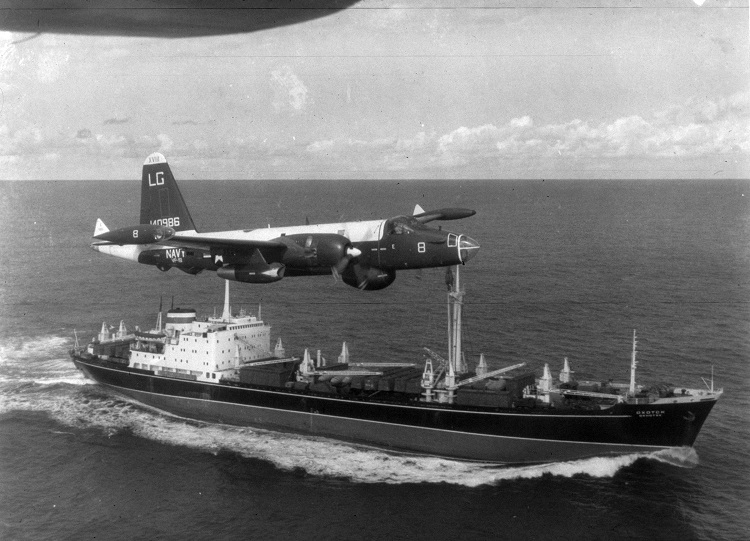
The Cuban Missile Crisis of October 1962 was a direct and dangerous confrontation between the United States and the Soviet Union during the Cold War and was the moment when the two superpowers came closest to nuclear conflict after American deployments of missiles in Italy and Turkey were matched by Soviet deployments of similar ballistic missiles in Cuba. Despite the short time frame, the Cuban Missile Crisis remains a defining moment in national security and nuclear war preparation. The confrontation is often considered the closest the Cold War came to escalating into a full-scale nuclear war.
Soviet First Secretary Nikita Khrushchev granted Cuba's request to station nuclear missiles on the island in order to prevent a future invasion due to the presence of American Jupiter ballistic missiles in Italy and Turkey, the 1961 Bay of Pigs invasion's failure, and Soviet concerns that Cuba was heading in the direction of China. A deal was established at a covert meeting between Khrushchev and Fidel Castro in July 1962, and later that summer, work on a number of missile launch facilities began.
An American U-2 spy plane secretly captured images of Soviet nuclear missile construction locations on the island of Cuba in October 1962. Kennedy did not want the Soviet Union and Cuba to learn that the missiles had been found. He spent several days having covert meetings with his advisers to talk about the issue.
Kennedy made the decision to establish a naval blockade, or ring of ships, around Cuba after a number of protracted and contentious talks. This so-called "quarantine," as he referred to it, was intended to stop the Soviet Union from bringing in additional military supplies. He commanded that the missiles already stationed there be destroyed, along with the missile launch locations. In a televised address on October 22, President Kennedy discussed the crisis with the country.
The Soviet Union must demolish any missile bases that have already been built or are complete, and all offensive weapons must be returned to the USSR, Kennedy said in a letter to Khrushchev issued on the same day, stating that the US would not tolerate the delivery of offensive weapons to Cuba. The letter was the first in a string of verbal and written exchanges between the White House and the Kremlin for the rest of the crisis.
After several days of tense negotiations, an agreement was reached between Kennedy and Khrushchev: publicly, the Soviets would dismantle their offensive weapons in Cuba and return them to the Soviet Union, subject to United Nations verification, in exchange for a US public declaration and agreement to not invade Cuba again. Secretly, the United States agreed with the Soviets that it would dismantle all of the Jupiter MRBMs which had been deployed to Turkey against the Soviet Union. There has been debate on whether or not Italy was included in the agreement as well. While the Soviets dismantled their missiles, some Soviet bombers remained in Cuba, and the United States kept the naval quarantine in place until November 20, 1962.
When all offensive missiles and the Ilyushin Il-28 light bombers had been withdrawn from Cuba, the blockade was formally ended on November 20. Two other important results of the crisis came in unique forms. First, despite the flurry of direct and indirect communications between the White House and the Kremlin—perhaps because of it—Kennedy and Khrushchev, and their advisers, struggled throughout the crisis to clearly understand each other’s true intentions, while the world hung on the brink of possible nuclear war. In an effort to prevent this from happening again, a direct telephone link between the White House and the Kremlin was established; it became known as the “Hotline.” Second, having approached the brink of nuclear conflict, both superpowers began to reconsider the nuclear arms race and took the first steps in agreeing to a nuclear Test Ban Treaty.
In language very different from his inaugural address, President Kennedy told Americans in June 1963, "For, in the final analysis, our most basic common link is that we all inhabit this small planet. We all breathe the same air. We all cherish our children's future. And we are all mortal."